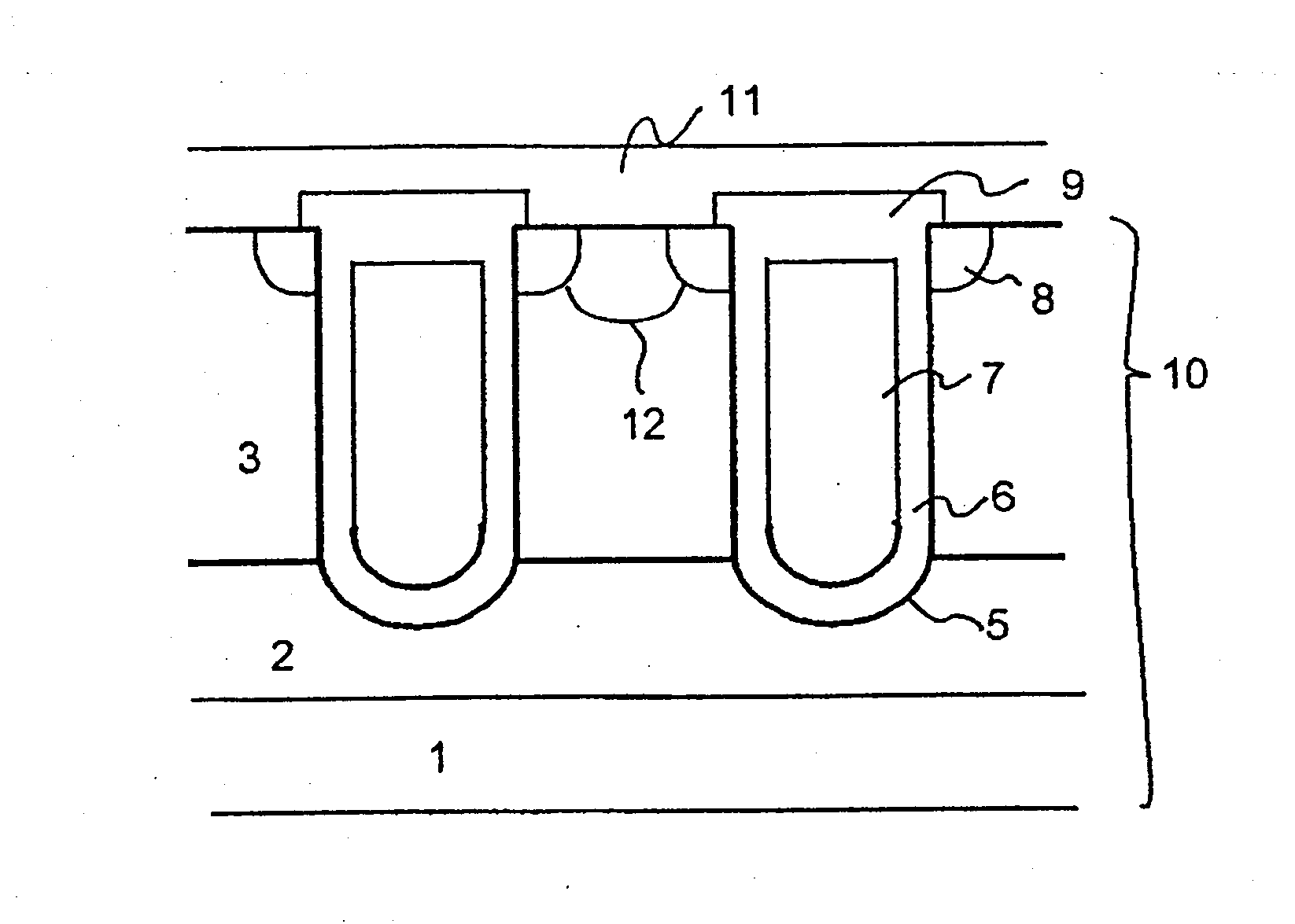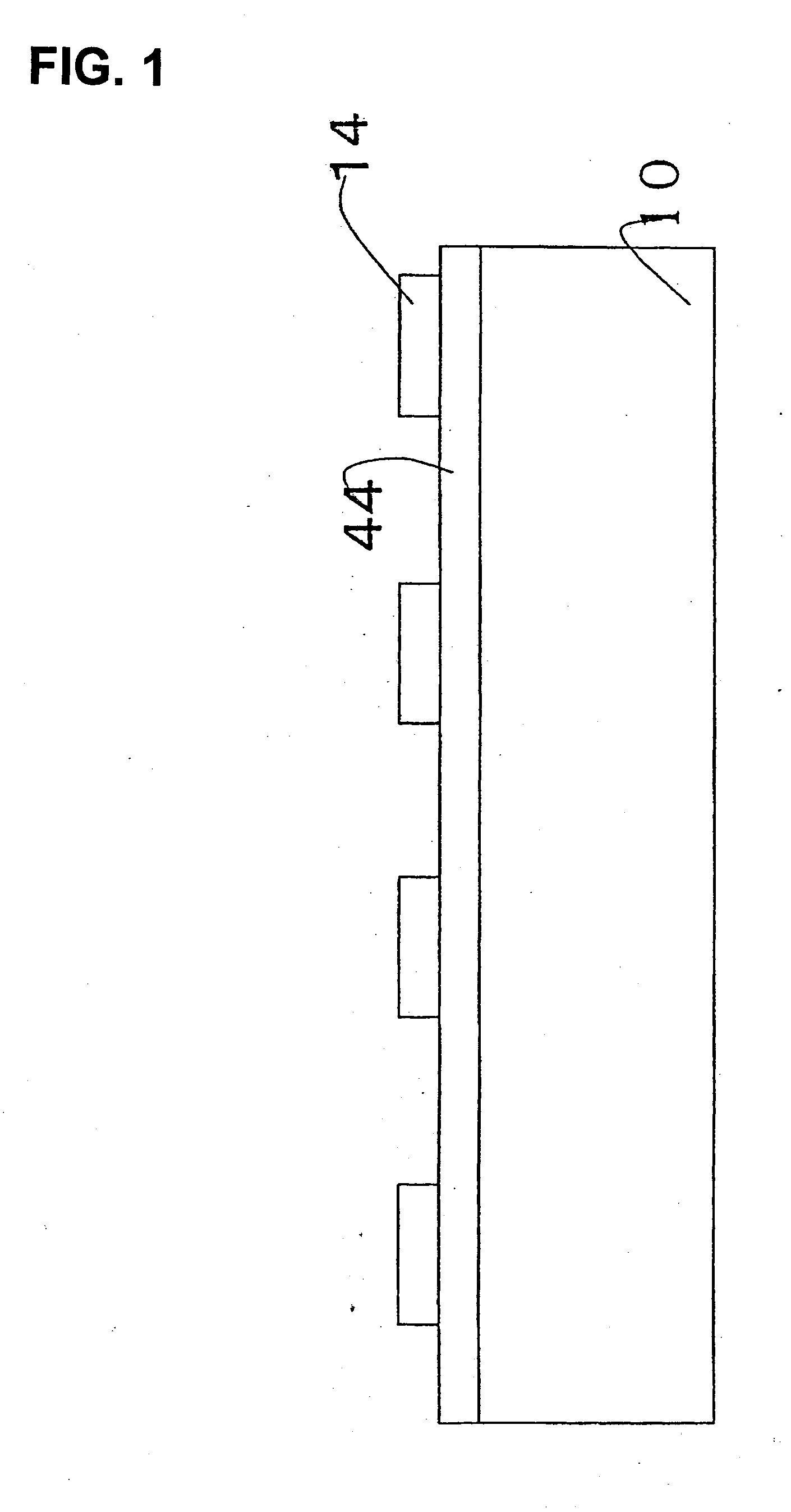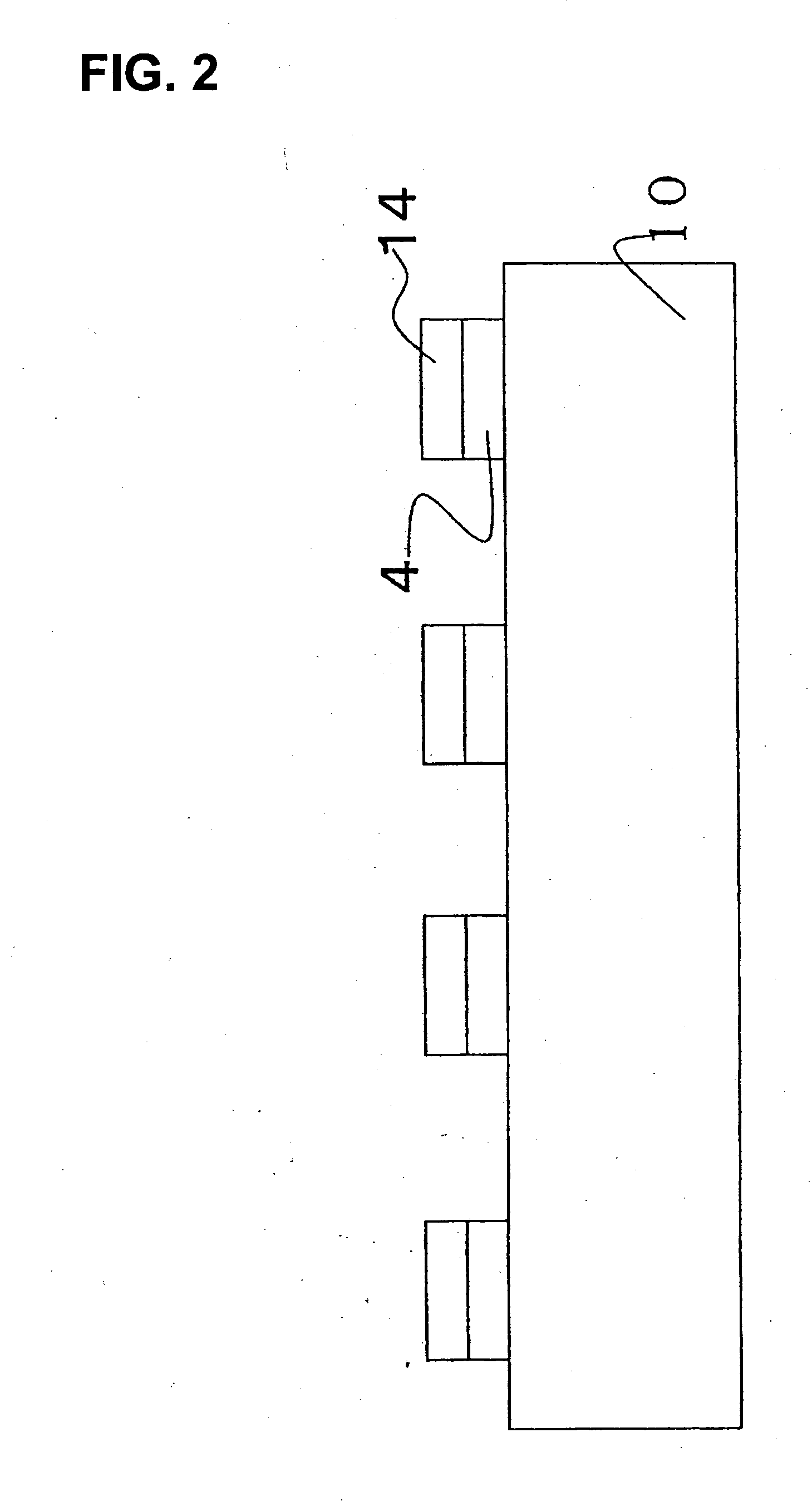Method for manufacturing silicon carbide semiconductor device
- Summary
- Abstract
- Description
- Claims
- Application Information
AI Technical Summary
Benefits of technology
Problems solved by technology
Method used
Image
Examples
first embodiment
[0038]A first embodiment of the method for manufacturing a MOS semiconductor device having a trench gate structure according to the present invention will now be explained in detail with reference to the attached drawings. Because a manufacturing process except for a trench etch process according to the present invention conforms with a conventional method for manufacturing the MOS semiconductor device, the manufacturing process except for the trench etch process according to the present invention is simply described without explaining detailed manufacturing conditions and so on. FIG. 11 is a cross-sectional view of a completed trench MOS semiconductor device according to the first embodiment of the present invention. SiC laminated semiconductor substrate 10 shown in FIG. 11 is formed by accumulating high resistance SiC layer 2 of n type on SiC substrate 1 of the n type by epitaxial growth, and further formed by accumulating SiC layer 3 of a p type on high resistance SiC layer 2 by ...
second embodiment
[0047]A second embodiment in which changed the etching condition of the first embodiment is changed will be explained. On the basis of condition 9 of Table 1 and the result shown in FIG. 4, according to the second embodiment the trench is etched to around 9 / 10 (about 9 μm) of the target depth under the etching condition of a first dry etching comprising: the mixed gas of sulfur hexafluoride (SF6), oxygen (O2) and argon (Ar); introducing the sulfur hexafluoride (SF6) flow rate of 4.2 sccm, the oxygen (O2) flow rate of 7 sccm and the argon (Ar) flow rate of 28 sccm; pressure of 0.4 Pa; ICP electric power of 500 W; bias electric power of 15 W applied to the SiC laminated semiconductor substrate side; and the temperature of the SiC laminated semiconductor substrate of 80° C. heated with a heater. FIG. 6B shows a cross-sectional view of SiC laminated semiconductor substrate 10 in which the actual etching shape is observed when the etching depth is 9 μm under the first etching condition. ...
third embodiment
[0050]A third embodiment to according to the method for manufacturing the SiC semiconductor device of the present invention will be explained. After thoroughly cleaning the SiC laminated semiconductor substrate, the SiO2 is layered on the SiC laminated semiconductor substrate in a thickness of 2 μm by CVD. The photoresist is applied on the SiO2 by the spin coat method. The photoresist pattern such as FIG. 1 is formed on the SiO2 as well as the first embodiment. The film thickness of the photoresist is around 2 μm. After forming the photoresist pattern, the SiO2 mask is formed by dry etching of the SiO2 using the photoresist pattern as a mask with the ICP dry etching apparatus. Etching is performed under the condition of etching that fluoroform (CHF3) gas is introduced at 15 sccm at ICP electric power 135 W, at bias electric power 15 W to the SiC laminated semiconductor substrate side and at a pressure of 1 Pa. A patterned line width is 2 μm in the third embodiment. FIG. 2 is a cross...
PUM
| Property | Measurement | Unit |
|---|---|---|
| Temperature | aaaaa | aaaaa |
| Temperature | aaaaa | aaaaa |
| Fraction | aaaaa | aaaaa |
Abstract
Description
Claims
Application Information
 Login to View More
Login to View More - Generate Ideas
- Intellectual Property
- Life Sciences
- Materials
- Tech Scout
- Unparalleled Data Quality
- Higher Quality Content
- 60% Fewer Hallucinations
Browse by: Latest US Patents, China's latest patents, Technical Efficacy Thesaurus, Application Domain, Technology Topic, Popular Technical Reports.
© 2025 PatSnap. All rights reserved.Legal|Privacy policy|Modern Slavery Act Transparency Statement|Sitemap|About US| Contact US: help@patsnap.com



